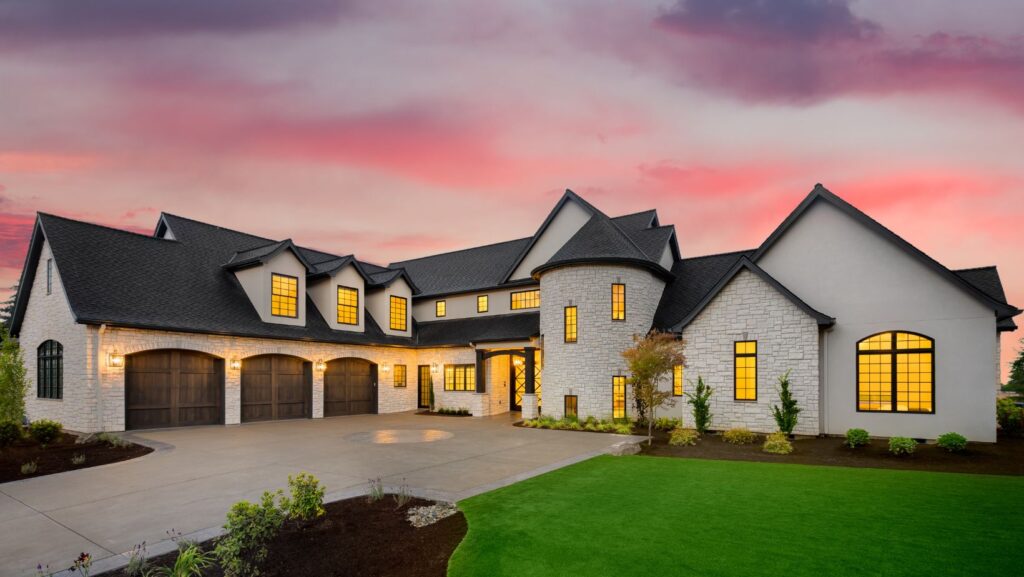Whether seeking tranquility, creativity, or energy, understanding these color dynamics helps craft interiors that not only look beautiful but also feel perfectly tuned to your needs.
Introduction to Color Psychology
Color psychology explores how colors can shape our emotions and perceptions, significantly influencing our daily lives.
You might wonder why color matters so much in designing your home. Well, colors have the magical ability to evoke specific feelings and reactions.
For instance, a soft blue can create a serene, calming atmosphere, perfect for a bedroom retreat. Meanwhile, a vibrant red in a dining room can stimulate conversation and warmth.
By understanding these subtle effects, you have the power to personalize your spaces, ensuring each room meets your emotional and functional goals.
Selecting the right colors transforms your home into a true reflection of your personality and needs, enhancing comfort and satisfaction in your daily life.
Choosing Colors for Different Rooms
When it comes to the living room, creating a space that exudes warmth and comfort can make it the perfect spot for relaxation and conversation. Soft neutrals like beige or taupe act as a wonderful base, while introducing warm tones such as terracotta or muted greens can add depth and a cozy feel. These hues invite guests to sit back, relax, and enjoy hearty conversations in a welcoming environment.
In your kitchen, where both culinary creativity and social interactions often bloom, consider incorporating vibrant shades like reds or yellows. These colors are known to stimulate appetite and energy levels, making them ideal for a lively cooking and dining experience. To maintain a sense of cleanliness and modernity, balance these vibrant tones with whites or light grays. This combination can keep the space feeling fresh and organized, encouraging pleasant social gatherings.

For the bedroom, tranquility and relaxation are the primary goals. Opt for cool blues, soft pinks, or gentle earth tones to cultivate a restful atmosphere conducive to sleep and unwinding. These serene shades can soothe the mind and body, transforming your bedroom into a sanctuary of peace.
Finally, in your bathroom, prioritize cleanliness and personal space. Crisp whites express purity and simplicity, while serene aqua tones or light pastels can bring a touch of calmness, refreshing the senses and providing a private retreat in your daily routine.
How Color Influences Room Functionality
When you’re selecting colors for your home, it’s essential to consider how they can enhance or detract from a room’s purpose.
For instance, if your office is drenched in high-energy colors like bright orange, it might feel overwhelming instead of motivating. Aim for soft greens or muted blues to create a calm environment conducive to focus and productivity.
Often, a common pitfall in color selection is choosing shades based solely on appearance without considering mood or function. For example, a dark, moody purple might seem stylish for a small reading nook but could make it feel cramped and uninviting.
To avoid this, balance bold colors with lighter tones and ensure the overall palette complements the room’s function.
Tips for Incorporating Color Trends
Keeping up with modern color trends can breathe new life into your home, but it’s important to maintain a sense of timelessness to avoid frequent overhauls. The trick lies in blending trendy hues with classic tones that never go out of style.
You can start by using on-trend colors in small accents, such as throw pillows, artwork, or decorative vases. These elements can easily be updated without breaking the bank whenever trends shift.

Another strategy is to designate one wall in a room as a focal point and paint it with a bolder shade that reflects current color palettes. It allows you to enjoy a splash of modern flair without overwhelming the space.
Remember, the key is balance—pair bold, trendy shades with neutral backdrops to ensure your home remains stylish yet enduring.
Using Color to Reflect Personal Style
When infusing your home with personal style, start by identifying colors that resonate with you and reflect your personality. Incorporate these shades in meaningful ways that don’t overshadow a cohesive aesthetic.
For example, if bold jewel tones captivate you, select harmonious accent walls or vibrant accessories that unify the overall design. Consider how each room flows into the next—using complementary colors ensures a seamless transition and cohesive feel throughout your home.
It’s also helpful to create a color palette that mixes personal choices with neutral tones, allowing flexibility to incorporate future style shifts.
Remember, designing a home that reflects your personality involves balancing individuality with unity, creating a space that is both uniquely you and harmoniously inviting.
The Bottom Line
Color psychology and selection play a crucial role in crafting a home that not only looks beautiful but also feels perfectly aligned with your needs. By understanding the emotional and functional effects of color, you can create spaces that foster relaxation, warmth, creativity, and productivity.
And if you’re planning to renovate or redesign your home and need some finances, don’t forget to check out CreditNinja.com to get the funds you need quickly and hassle-free. With their flexible repayment options, personal loans from CreditNinja can help bring your color-filled home design dreams to life. Happy designing!

